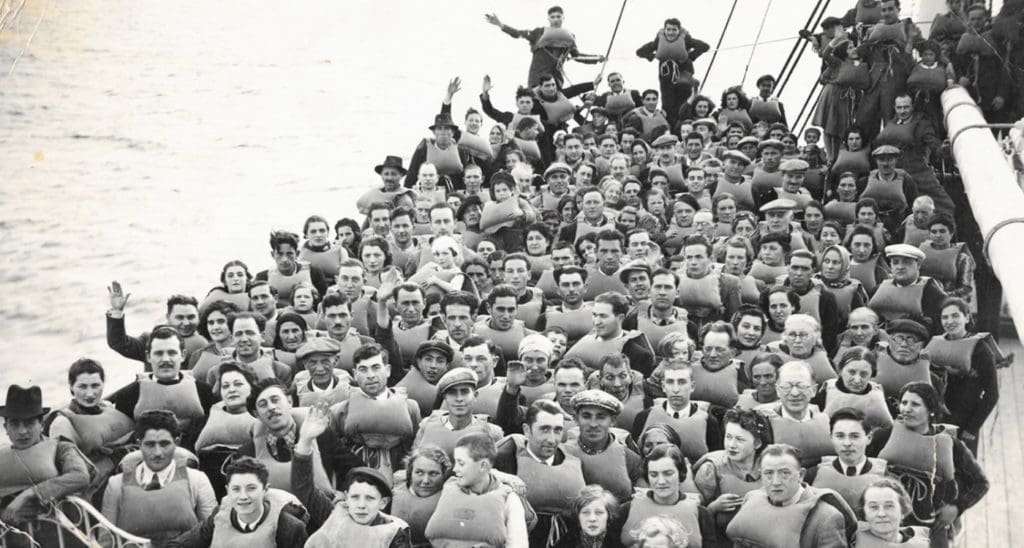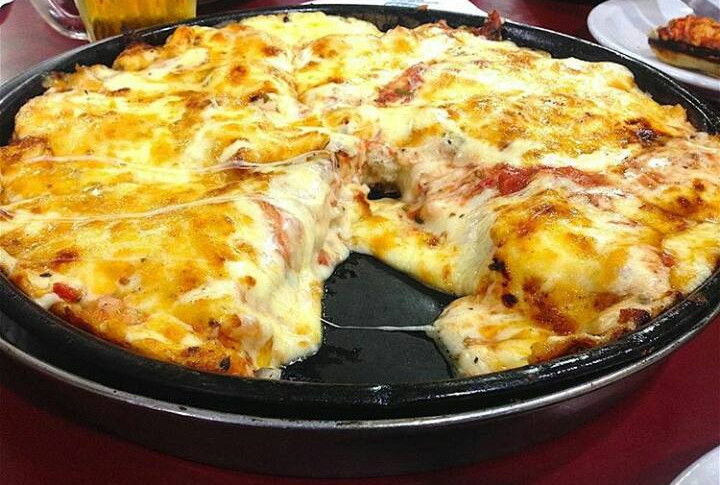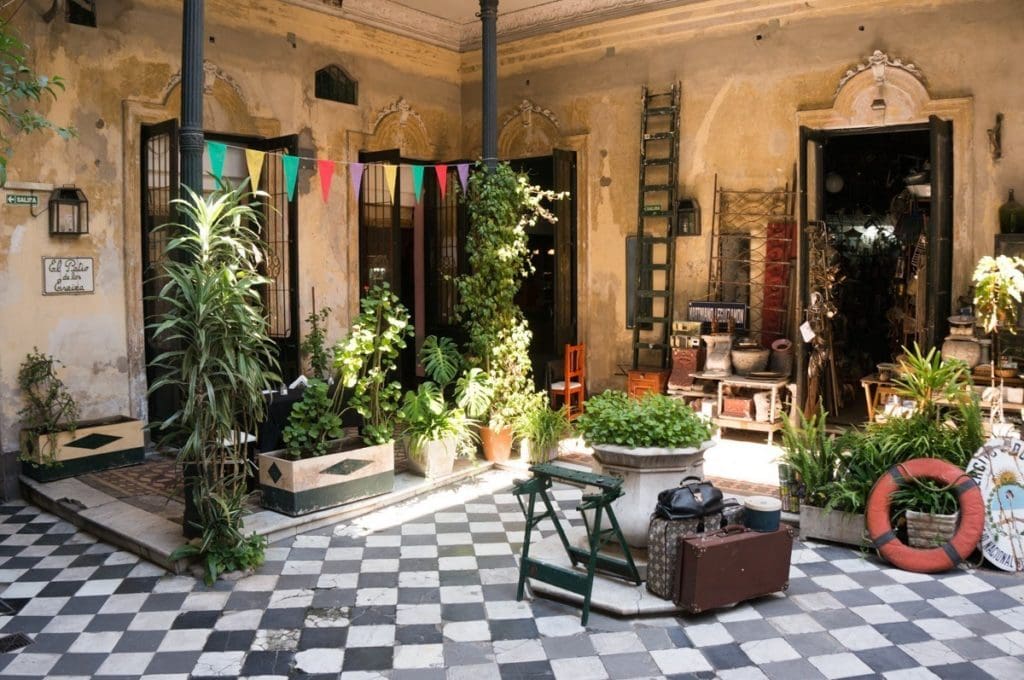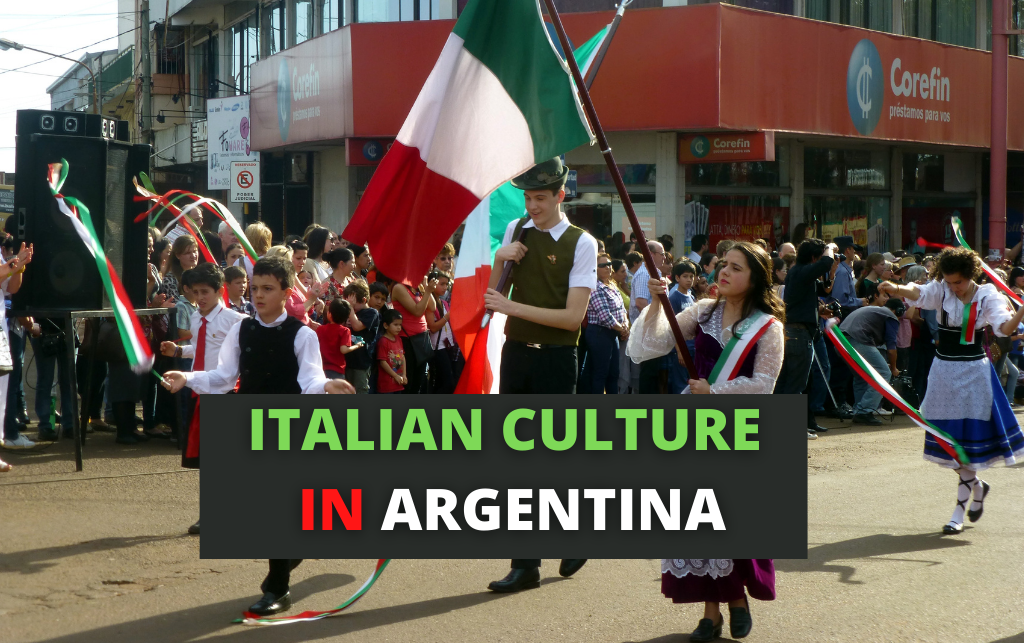Although Argentina is widely regarded as the “Paris of Latin America”, it could very well be considered “the Rome of Latin America”! The influence of Italian culture and customs from Italian immigrants in Argentina are one of the main things you should know when visiting Buenos Aires; from food and theater to architecture and slang.
By Carla Chinski, Content Marketing Manager at Vamos Academy
The History of Italian Immigration in Argentina
After the First World War, Argentina–and Argentines–were going through a bit of an identity crisis. What constitutes Argentina? Is it the frontiers, the language, or the loyalty to Argentine values? Patriotism was no longer the norm, perhaps because of the sudden increase in immigration from Italy and Spain.
Some Argentine immigrants, in fact, believed that they should keep in touch with their Italian culture and tradition, because assimilation (that is, belonging to Argentine culture as a citizen) was hard to manage. And some academics also believe today that, because Italians didn’t have a strong sense of belonging in their own country, immigration to Argentina actually helped solidify the community.

After 1914, then, there was a surge of activities and places to gather and meet other Italians; and so began Italy’s lasting influence on Argentina, which is now a big part of our culture and is key if you want to understand where many of the customs and habits that you can see today are coming from. A good example of this was political affiliation and associations, mostly coming from the “left”. There were also many cultural centers where Italian was the main language, and sociedades that helped families’ integration into Argentine society. Just so you can get an idea, when compared to immigrants of other origins (mainly, of British and Spanish descent/origins), Italian immigrants took up 40% of the population at the time.
There was an undeniable truth: Italians made money, and they also funded institutions with that money, and so they had to be integrated anyway. For context, during the previous century (that is, during the 1800s), there had been a wiping out of indigenous people and communities, to put it mildly. But now, leftist Italians were being persecuted in their own country, and so they chose Latin America, which was largely welcoming at the time.

Not that Italians had lots of money at the beginning of the twentieth century; on the contrary, most families were struggling financially. That’s why their focusing on community was a sort of refuge. Most Italians had oficios (a.k.a., blue-collar jobs) and soon came to be known for bringing their culture into the country. It became clear that cultural assimilation, when it comes to Italian immigrants in Argentina, was bound to happen, and in fact continues to be a lasting influence on Argentine culture.
Italian Culture: Language, Food and Traditions
Italian culture is the way it is today after assimilation, when Italian immigrants in Argentina began marrying into indigenous families, Spanish families, and into other ethnic and national groups. And so that was the start of Italian-like buildings, Italian restaurants and food and, of course, Italian gestures and expressions which, really, cannot be ignored.
Italians’ culture and essence didn’t depend only on the way they percieved themselves; other cultures in Argentina (meaning, other immigrants of all backgrounds) didn’t hesitate to draw from Italian culture to stereotype it or mock Italians’ behavior. This is not as bad as it sounds: for some, what was considered a stereotype it was a source of pride, and it also reflected a sense of place that Italians appreciated. These types of artistic mediums usually involved theater and song.
Italian Immigration, Culture and the Arts
There are some negative stereotypes that came with Italian culture in Argentina: take, for example, this one testimony from the nineteenth century: “the whining and grotesque Neapolitan has the opposite of the gaucho’s virtues. While the latter symbolizes courage, friendship, generosity and skill, Italians personify selfishness and calculation.”
In drama scripts and theater productions, very important writers like Armando Discépolo were the main figures when it came to writing those stereotypes into Argentine culture. Part of it involved the cocoliche, an early type of Argentine slang made up of part-Italian, part-Argentine expressions, some of which are recognizable to Argentines now (like “mina”, meaning “woman”) and some of which are no longer relevant (like “cafishio”, meaning “theif”).
Italian Food: From Ice Cream to Pizza

If one were to choose a single reason why Argentine food is so delicious, one would probably say that Italian immigration made it what it is today, at least partly. Italy is known worldwide for its hearty, home-cooked meals as well as its desserts. In Buenos Aires specifically, there are pizza places, ice-cream vendors, and pasta restaurants (like Salgado in Villa Crespo and La Parolaccia in Belgrano, Buenos Aires).
Some of the food and these traditional recipes are aimed at getting the best (more, that is) out of cheaper, more accessible ingredients like flour and eggs, precisely because of the wars that Italy went through during the first half of the twentieth century. You can experience Italian cuisine for yourself by taking cooking lessons to learn how to make your own pasta dishes, for example.
Today, Argentine customs, culture and ideas around food are all Italian-based. In Argentine culture, food is considered to be a communal matter, something to gather the family together, or to have a chat with your friends; most importantly, food can never, ever, be scarce. It’s also very common to experience an Italian-like sobremesa: talking for hours sitting at the table, even after the meal has come to an end.
Italian food goes way beyond that, and has also influenced pastries, sauces and charcuterie (you can find excellent cured meat like the fuet or a salamín in any of the Argentine provinces!) What is harder to find, though, are the regional varieties of Italian cuisine: you can expect to find a pretty uniform take on Italian food anywhere, and no specific variations.
Italian Language and Slang
The shores of the Río de la Plata (also known, in English, as the River Plate) were home to most lower-class Italian families. Because of assimilation–which we’ve talked a bit about above–, Italian expressions began to mix up with Spanish idioms. This is known in Argentina as lunfardo.
The uniqueness and charm of Italian slang in Argentina soon took over and became ubiquitous. What started as a way to communicate between Italians, and for Italians, became wildly popular because of shared homes or conventillos (low-class buildings with small rooms you can still visit today in provinces like Rosario.) Here’s a fun fact: the name for this specific slang is cocoliche. Cocoliche started partly as a way for inmates to communicate so that Argentine police couldn’t understand what they were saying.
In tango lyrics–one of the most typical and popular Argentine dances and musical genres– one can find a ton of cocoliche, to the point that it’s very hard to understand most of what the singer is saying, or what the composer actually meant.
Argentine Italian Gestures
- The “ojo”: it means “watch out” or “be careful!”
- The shaking of a closed hand: it means “what do you mean?” or “what are you doing?”, not so nicely.

- The “qué me importa”: “What do I care?” or “I don’t know”. You can make this gesture by moving your hand from your chin outwards.
- “Dinero” or “plata” = this gesture is used for money (needing money, wanting money, talking about it); you can make it by rubbing the fingers of one hand together.
Also read: Argentina Cultural Do’s and Dont’s
Where to Find Italian Culture in Buenos Aires
Whether you’re looking to come into contact with Italian culture or participate in the many Italian cultural activities in Buenos Aires, there are many options to choose from. You could even plan ahead and go for an Italian-themed visit to Argentina.
Argentine-Italian Architecture
- Torrepueblo: an Italian Haven just an hour away from Buenos Aires — Torrepueblo is 8000 sq. meters of architectonic beauty that resembles the quaint, ancient streets of rome, with its colorful walls and narrow alleyways. Torrepueblo is located in Benavídez, Tigre (in the Greater Buenos Aires Area).
- Palacio Barolo: Luis Barolo, the architect who built the palacio Barolo you can still visit today, was a real entrepreneur: he was one of the first people in the country to start producing and manufacturing cotton on a wider scale. To build the Palacio, he said himself that he was inspired by Dante’s Divina Commedia (Divine Comedy, a classic of Italian literature), which was written in the thirteen-hundreds. The style is considered to take after the “Venetian gothic”.
- The “casa chorizo“: The casa chorizo is a horizontal structure that goes straight to the back of the block, with a narrow entryway and halls (hence the name chorizo, after a long Argentine piece of pork meat eaten at roasts and BBQs), leading to a huge central patio, and to the rooms themselves. You can see these types of houses in largely residential neighborhoods like Almagro, and in the city center.

- Casa de Gobierno / Casa Rosada: The Casa Rosada was built by Italian architect Francesco Tamborini. The house combines details from the Italian neo-renaissance with some French detailing. You can see this influence today in the main arch that gives way to the entrance. Tamborini also built and designed the Teatro Colón.
Italian Clubs and Cultural Centers in Buenos Aires
- “La” Dante Alighieri: This institution is the most prestigious Italo-Argentine cultural center and school to date. It was founded two centuries ago, and it’s the most important one in the world next to Italy’s very own Dante center. (Address: Tucumán 1646, City of Buenos Aires)
- Asociación Italiana de Unión y Benevolencia: According to Cultura Argentina, “today, L’Unione hosts, apart from its many cultural activities, the Eduardo Damicis school for pre-school, primary school and secondary school for international education”. (Address: Perón 1372, City of Buenos Aires)
- Club Italiano: This is one of the most important clubs and cultural centers, located in the Greater Buenos Aires area’s Almirante Brown. The architecture remains intact. There is a gym, many options for outdoor activities, a theater stage and even a cinema. The club also offers Italian lessons and, like the Dante Alighieri, has an important library where courses and workshops take place. (Address: Avenida Rivadavia 4731, Buenos Aires)
Italian Culture in Buenos Aires Today
Today, there are still many Italian immigrants in Argentina. However, what they bring to the table (so to speak), as well as their cultural and economic background, has changed a lot since postwar times.
According to Infobae, “Recently published research seeks to describe the characteristics of this [migratory] phenomenon. It is called the Survey of Contemporary Italian Presence in Argentina (EPICA) and it is one of the projects of the Laboratorio di Idee Italia Argentina (L.I.A) […] Indeed, the research data shows that millennial professionals are the majority: 53% of those interviewed are between 25 and 39 years old. 70.1 percent have a university degree and more than 20 percent (21.9) have a master’s or doctorate”.
This basically means that Italian immigrants in Argentina are mostly middle-class and upper-middle-class. It’s likely that a lot of them have traveled to Buenos Aires before for tourism, or to go visit the country short-term, in order to immerse themselves in Argentina’s pre-existing Italian heritage, or even to take Spanish lessons in Argentina.
Despite the differences in background, many recent Italian immigrants in Argentina still take part in cultural activities, like Italian social clubs or restaurants, Italian schools and other cultural institutions like the Dante Alighieri.






